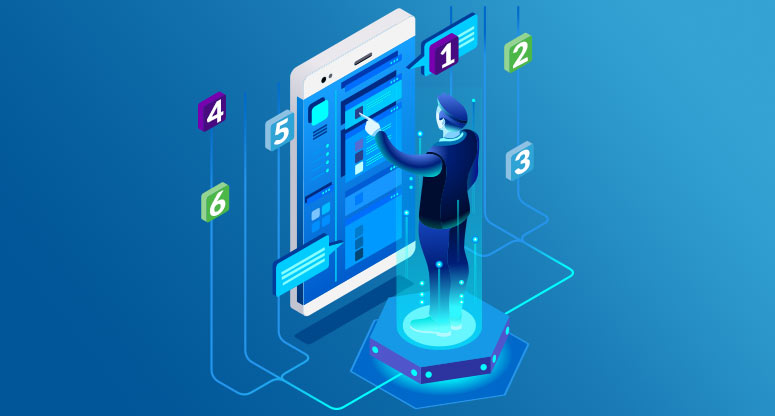Call Center Outsourcing6-minute read
Six Essential Types of Contact Center Data
The acceleration of technology in recent years has led to equally rapid shifts in consumer behavior. As a result, customer-care best practices have changed, too, with the traditional call center now replaced by a modern and sophisticated contact center.
Encompassing a wider variety of communications channels to meet and interact with consumers where they’re most likely to congregate, the modern contact center is more complex than the call centers of old, representing a sometimes-difficult shift in operational strategy. As such, some businesses have been reluctant to embrace it.
Yet business leaders ignore this evolution at their own peril. More than just an obligatory method of keeping up with the tech-savviest customers, the modern contact center in fact offers a much more robust set of tools for ensuring satisfaction and loyalty—major factors for driving sales and growth. And it’s hard to image a business in any industry where those aren’t fundamental objectives.
There are a number of ways that implementing a modern contact center can help leaders better realize their business goals. First, it gives customers an experience that’s more likely to satisfy their immediate wishes, leading to additional sales and better word of mouth. Second, it offers the means for continuous operational improvement via the tracking and analysis of contact center data.
Understanding Contact Center Data: From Quantitative to Qualitative

For businesses looking to gain a competitive edge, or simply to ensure continued success in a technology-driven future, taking the steps necessary to collect and analyze key contact center data is now absolutely essential. And thanks to innovation, that task is well within the grasp of companies of all shapes and sizes.
“Technology enables you to delve into data, find the root causes and make correlations with buying patterns,” as Ashok Narayanan, strategic technology officer for Working Solutions, recently explained in a look at how the insights offered by technology can enable business solutions. “Then, you can present the most enticing options to clients to best serve their customers.”
Technology enables you to delve into data, find the root causes and make correlations with buying patterns. Then, you can present the most enticing options to clients to best serve their customers.
It isn’t always immediately clear, however, how to make the best use of that data—or what data you should be looking at in the first place. Given the myriad of communications channels now in use, and the advanced technology on which they’re built, the amount of valuable information that can be gained by tracking contact center data is staggering.
The first step in understanding what kind of contact center data to track is distinguishing between quantitative and qualitative data. Simply put, hard (quantitative) data is objective, and can be accurately measured in basic numerical terms. Soft (qualitative) data is more open to interpretation and requires a certain level of planning to accurately measure.
Quantitative data includes such items as call-resolution rate, percentage of dropped calls and the number of closed sales by an individual agent—all hard-and-fast statistics that can be readily tracked and analyzed in unambiguous terms. There’s a good chance you’re already measuring these, even if you’re still using a traditional, phone-based call center.
Qualitative data tracking is a bit trickier, involving elements that aren’t quite as cut-and-dried—like a customer’s opinion, behavior or even tone of voice. How satisfied are your customers with the service you provide? How likely are they to refer you to a friend? What messaging is most effective with a specific gender or age group? What kind of data can you track to answer these questions?
Qualitative data is often interpreted differently by various people within an organization. So, it’s important to remove as much ambiguity as possible before you come to any conclusions about what you’re tracking. You can accomplish this by creating a specific, agreed-on definition for each soft data point before you begin to measure.
6 Essential Types of Contact Center Data

Now that we understand the two basic types of contact center data, it’s time to look into just how they’re tracked. In general, there are six types of tracking methods:
1. Text-based contact center data tracking monitors communications that take place via text, including emails, SMS messaging, website contact forms, social media and a myriad of other channels. This represents an enormous amount of data. Effectively analyzing it isn’t as difficult as you might think, thanks to tools that can automatically compile text and scan it for key data points.
2. Speech-based contact center data tracking involves monitoring conversations between your agents and customers, in real time, via phone or other voice-based channels. This is typically done with software that records calls and transcribes them into text. Then, as with text-based data tracking, it’s simply a matter of analyzing those qualitative transcriptions for certain patterns, keywords or other quantitative data that’s important to your specific operational goals.
3. Self-service contact center data tracking involves checking automated customer interactions, such as form submissions or frequently asked questions (FAQ)-page readership. As it becomes more critical to offer your customers a wide choice of self-service channels, so too is it essential to keep track of just how customers use these tools to achieve continuous improvement.
![]()
4. Desktop contact center data tracking looks at the computer and equipment used by your agents. This is done not just to help ensure that the performance of your agents meets expectations, but also to make sure that you’re using the systems and technology in which you’ve invested to their fullest potential. As with the other contact center data points, analytical software can be implemented to automatically scan a huge amount of soft data to pull out the hard data you want to track.
5. Cross-channel contact center data tracking assesses customer activity across multiple communications streams. A more involved undertaking than the previous types of data tracking, cross-channel is used to understand how customers shift from one channel (voice, for example) to another (say, social media), and then leveraging that knowledge—sometimes in real time —to make sure you’re giving them the most effective and up-to-date messaging at every possible point.
6. Past-and-predictive contact center data tracking is even more complex, with cross-analysis of qualitative and quantitative data to predict future trends. By learning the historical patterns of consumer behavior, you can better prepare yourself for what the future holds—what time of the year to expect spikes in activity, for instance, or what messaging best during certain seasons or promotions.
Consult with Contact Center Data Experts
Understanding these types of contact center data tracking means taking the first step on the road to optimizing your call center’s effectiveness. But make no mistake: It’s no simple task to set up these processes, or to maintain the sophisticated tools and software needed for the in-depth analysis described above.
As important as it is to put each of these types of contact center data tracking processes into place, it’s not a process that should be undertaken lightly. Getting any of your data wrong or using a system that isn’t comprehensive enough to separate the hard data from the soft, means not just missing opportunities. Potentially, it even could give customers a worse experience by delivering the wrong message at the wrong time.
For this reason, many leaders choose to enlist the services of on-demand solutions providers to meet their contact center data tracking needs. At Working Solutions, we have more than two decades of experience offering the kind of advanced contact center data tracking and analytics that businesses need to success in a marketplace that’s more crowded and competitive every day.
We specialize in providing on-demand solutions to meet every variety of contact center need, from startups to FORTUNE 500 brands. And with a breadth of experience across many major industries, we have the know-how to offer a contact center data tracking solution customized to meet your specific operational needs.
Interested in learning more? Contact us today to schedule your complimentary consultation with a Working Solutions expert. Discover how we can help you take your contact center strategy to the next level.
Let's connect.
This Might Interest You...
This website uses cookies to personalize and improve your experience. Continue browsing our site if you agree to our Cookie Policy or feel free to Manage Cookies yourself.


